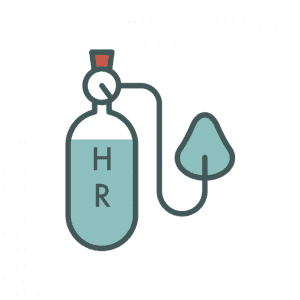If a member of your staff brought up a grievance, would you know how to handle it? Regardless of how good your people practices may be, and how capable your line managers are, at some point in your career, you might well find yourself in a situation whereby you need to follow a formal grievance procedure.
This procedure should be included in your staff handbook, and it should always be followed to the letter. It’s crucially important because it can help you to nip any problems in the bud, and keep your business out of costly employment tribunals.
Here, are the five crucial, and ‘key’ steps that you need to cover.
1.Informal discussion
All grievances should be taken seriously, so it’s vital that you address the problem head-on rather than attempt to brush the issue under the carpet, in the hope that it will just disappear or fix itself. Still though, there’s no need to blow things out of proportion. Many problems can be handled with an informal chat between the employee and their line manager.
If a suitable outcome can’t be reached, then the employee should be asked to submit a formal grievance letter, if they haven’t already done so.
2. Formal meeting
At this stage, the issue needs to be discussed in more depth. The meeting should of course be held in a confidential setting, chaired by the manager designated to handle the full grievance process, and your employee should be advised that they can bring along a colleague or trade union representative.
Collect as much information as possible, and ask plenty of questions. It’s always wise to remain impartial, and treat the meeting as a fact-finding mission before going away to tie up loose ends and verify the finer details.
3. Investigation
If the issues being discussed are particularly complex, then it may be necessary for you to pause proceedings for a short period of time to gather more information, and cross-reference the accounts that you’ve received.
Though it’s important that you’re thorough here, be mindful that the time is ticking. Having unresolved grievance procedures ticking on can have a real, tangible negative impact on your workforce. Wherever possible, give your employee a date that they can expect to hear the outcome by. Managing expectations is critical, and shows that you’re treating the situation with importance.
4. Make and communicate your final decision
At this stage, the employer must decide whether to uphold or dismiss the grievance. The decision should be communicated to the employee in writing, and they should also be provided with notes and minutes from any formal grievance meetings that were held as part of the process.
To fulfill your obligations here, you’ll need to make sure that all paperwork is carefully collated throughout the procedure. It should go without saying that your records need to be timely, accurate, and confidential.
5. Offer the right to appeal
It would be easy to assume that once the final decision has been communicated, everything is done and dusted. This isn’t the case though. You need to offer the option of an appeal, which would essentially restart the entire process.
To minimise the potential impact of bias, the case should be handed over to another manager wherever possible.
The very nature of grievances procedures means that they can be uncomfortable for everyone involved. Still though, they’re sometimes unavoidable, and you need to be sure that you can handle the situation in line with your responsibilities as an employer.
If you’re handling a particularly contentious grievance procedure, or it’s your first time navigating your way through the process, then bringing in some external help from an HR professional could help you to ease the load, and get the best possible outcome. To have an initial chat about how I can support you in the event of a grievance situation, get in touch today.





















